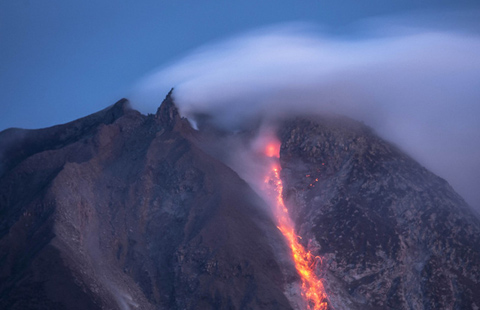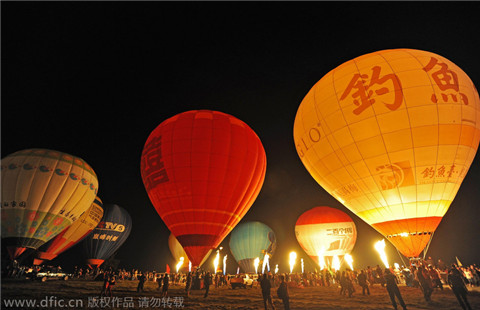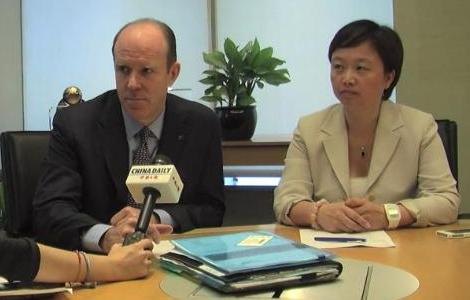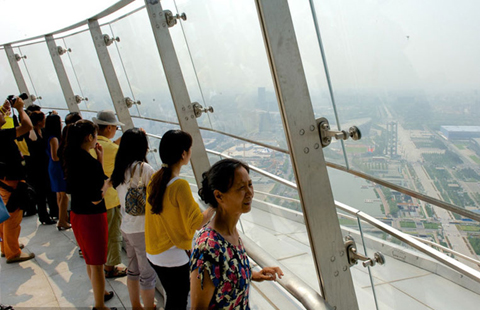Pilot program to test air pollution at schools
Updated: 2014-10-10 07:51
By Wang Xiaodong(China Daily)
|
||||||||
Schools in Beijing have started to monitor air quality on campus and issue warnings if necessary to minimize risks to students posed by hazardous gases and particles such as PM2.5, which has become a major air pollutant in the city.
The pilot program, which was put into operation in September and covers two schools, will be applied to all schools in Beijing if the one-year trial period is successful, according to the Beijing Health Inspection Institute.
The monitoring includes carbon dioxide, carbon monoxide, methanol, PM10, and PM2.5, which is particulate matter smaller than 2.5 micrometers in diameter.
Authorities have established 10 monitoring sites at two schools, including eight spots for indoor air quality monitoring and two for outdoors, the institute said.
Health staff will study the data and take into account the results released by meteorological stations, and recommend schools take measures in case of pollution, according to the Beijing Health Inspection Institute.
By monitoring classroom air quality in real time, authorities can take measures if serious problems occur to prevent the spread of airborne diseases, according to the institute.
"We are still studying the data obtained on air quality both indoors and outdoors at the schools," said Cai Changjing, a press official of the institute.
A major purpose of the program is to compare the concentration of PM2.5 indoors and outdoors so schools can recommend whether students stay inside or go outdoors for exercises on polluted days, Cai said.
The average density of PM 2.5, which can penetrate into the lungs and can pose a serious health hazard, was 89.5 micrograms per cubic meter last year in Beijing, 2.5 times the national standard of 35 mcg per cu m, according to the Beijing Environmental Protection Bureau.
"We installed the air quality monitoring system in early September in the school according to the requirement of the health authorities," said a vice-principal of Fangcaodi International School in Beijing who gave only her surname, Liu. The school is one of the two schools for the pilot program.
The other school did not want to be identified.
In order to give a more vivid display of the monitoring results, the school also installed a display screen for the system.
"There are signal lights on the display so the lights will show different colors, such as green or red, to correspond to different air conditions," she said. "It makes it easier for teachers and students to understand and identify the monitoring results."
Hu Qingming, a Beijing resident whose daughter is a second-grader at a primary school of the city's Dongcheng district, applauded the program.
"The city is so big that the PM2.5 statistics released by the city as a whole are too general and can't reflect the air pollution situation of a small area, such as a school. With PM2.5 monitoring devices installed in schools, teachers and children can make a better decision on whether they should have outdoor activities or not," he said.
Zheng Jinran contributed to this story.
(China Daily 10/10/2014 page5)

 Chinese companies going global in expansion
Chinese companies going global in expansion
 Builder flexes muscle in US
Builder flexes muscle in US
 Li arrives in Germany, first leg of Europe trip
Li arrives in Germany, first leg of Europe trip
 Mt Sinabung erupts again in Indonesia
Mt Sinabung erupts again in Indonesia
 Silent HK majority urged to support government
Silent HK majority urged to support government
 Lunar eclipse in Asia and the Americas
Lunar eclipse in Asia and the Americas
 Hot air balloon challenge in Wuhan
Hot air balloon challenge in Wuhan
 Cultural bridge key for China, US
Cultural bridge key for China, US
Most Viewed
Editor's Picks

|

|

|

|

|

|
Today's Top News
Chinese companies going global in expansion
Waldorf Astoria sale to spur more purchases by Chinese
Premier pushes innovation on German visit
Beijing to keep the lid on air pollution for APEC
Li arrives in Germany, first leg of Europe trip
China's economy surpasses US
IMF: Shadow banking filling gaps
China's status prominent at 'Big Four' firm Ernst & Young
US Weekly

|

|







